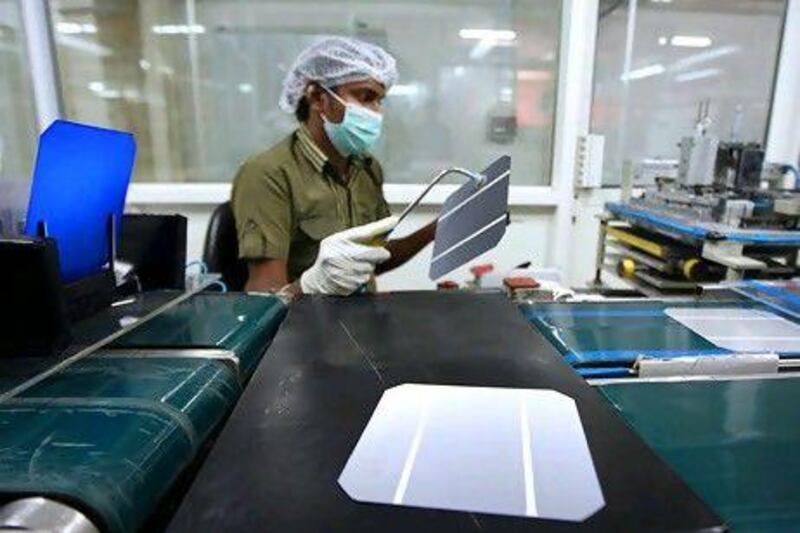FUJAIRAH // Workers at Microsol International wear hairnets to avoid contaminating the fruits of their labour.
They are a privileged bunch, having secured jobs in the only factory to make solar panels in the region. The only problem is Microsol cannot find customers in its home country and must instead send its supplies as far as Australia and Germany.
"We've created the largest solar panel plant in the UAE, but we are not selling in the UAE itself," said Jayaraman Vishwanathan, the director of finance at Microsol. "Solar is expensive, right? This cannot succeed without government support."
Microsol's predicament is a reflection of the obstacles to clean power across the Gulf. Incentives for renewable energy and lower subsidies for fossil fuels have helped solar and wind power to flourish in nations such as Germany and the Netherlands.
In the Gulf region, governments have announced renewable energy targets but have yet to come through with regulations to make them economically sustainable. That hinders the local market, a problem in the manufacturing industry, where it is more efficient to produce near the customer base - particularly if the goal is sustainability.
Masdar, Abu Dhabi's clean energy company, has had to shelve plans for a solar panel factory in the emirate for those reasons.
"There is just no way you can compete in a local environment where your market is not up to that scale, so you have to be smart about it," said Frank Wouters, the director of Masdar Power, in a recent speech to foreign energy ministers. "If you want to have local production then you have to look at the whole equation."
A plant would require 200 megawatts of demand a year to be economical, he added.
Saudi Arabia has a US$3 billion (Dh11.01bn) plan for solar panel factories, aiming to create jobs and supply potential solar parks in the kingdom. But an official from the National Industrial Clusters Development Program, the government entity leading the manufacturing push, has privately expressed doubts.
Microsol was optimistic when it established its headquarters in the UAE eight years ago.
"Being the only player in this space in this region, we'd face little competition," Mr Vishwanathan recalled in his office in Fujairah, just steps away from the production line where workers handle solar panels with plastic gloves.
Despite the bleak outlook for a regional market, the company plans to spend $80 million over the next three years to nearly triple the factory's capacity. Its eye is on India, where the government has announced a plan for adding 20 gigawatts of solar power by 2022.
That will feed into global growth in solar demand, which the brokerage Wunderlich Securities forecast would increase 40 per cent next year from 16 to 22 gigawatts. The US and China, the world's biggest producers of solar panels, are expected to lead that demand growth along with Germany, as it abandons nuclear power following the Fukushima disaster in Japan.
Manufacturing in the GCC region is a small piece of that pie, with the only production Microsol's 100 megawatts worth of panels a year.
Those panels begin with styrofoam boxes of silicon wafers that are the raw material. Workers oversee machines that dip the wafers into vats of chemicals, steam wash them, heat them to at least 800C to create a thin, blue sheet capable of absorbing the sun's energy.
Finally, workers test the solar panels. Three lamps, so powerful they can simulate the sun's rays, beam down on the blue squares. If the panels make it past Mike, Lima or Ninja - the names not of the workers but of the testing machines - they are packed in styrofoam crates and shipped out.





